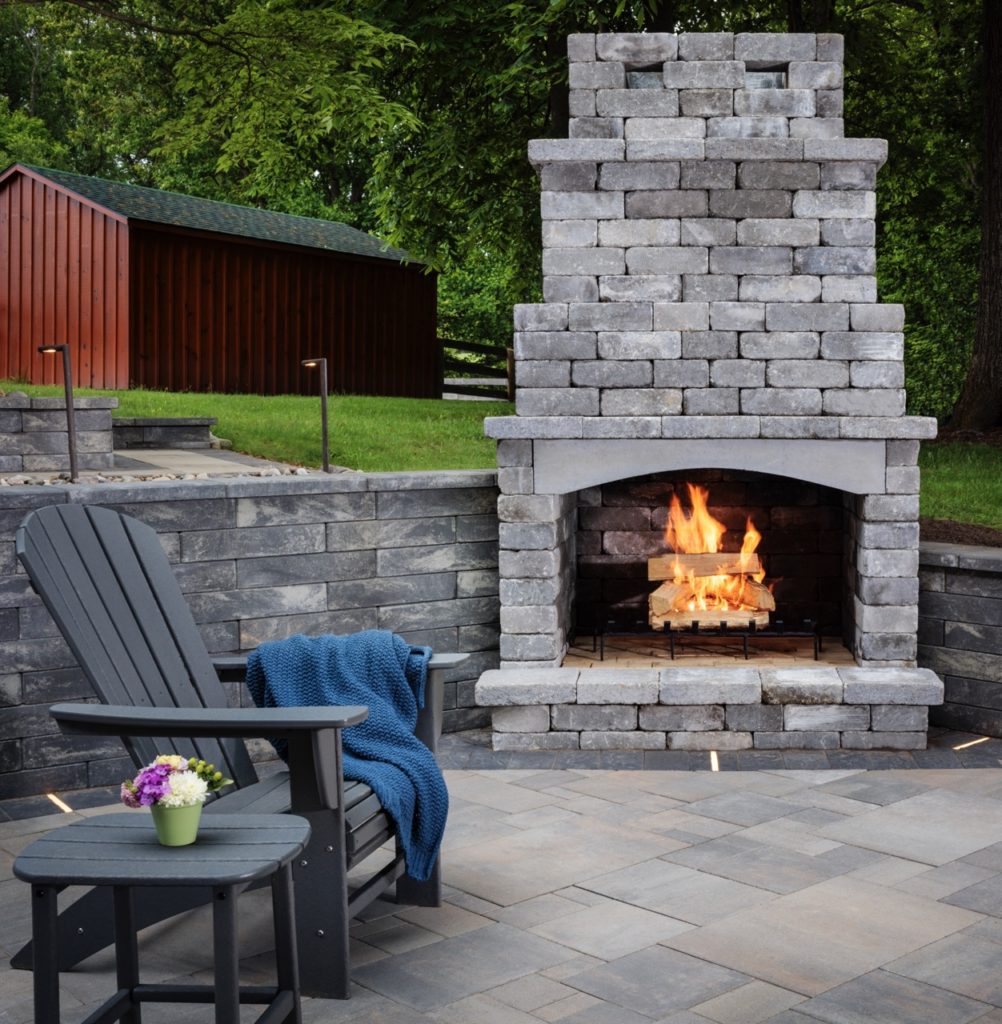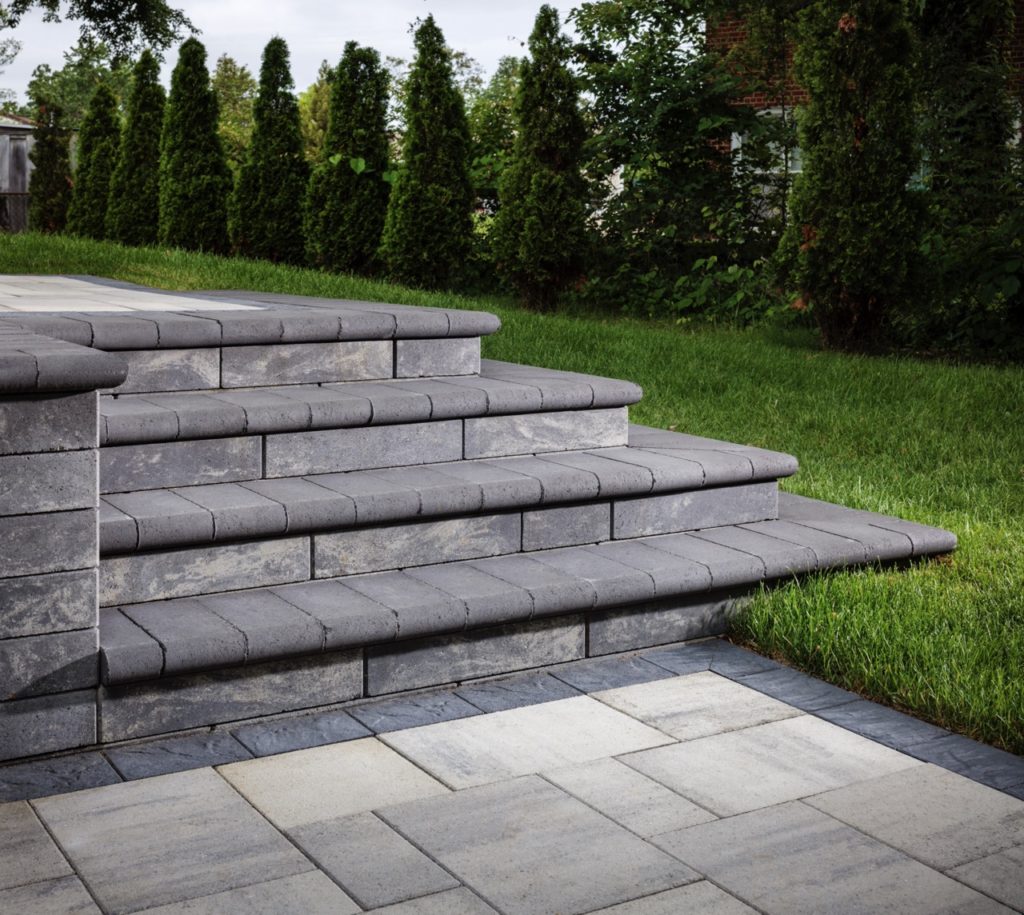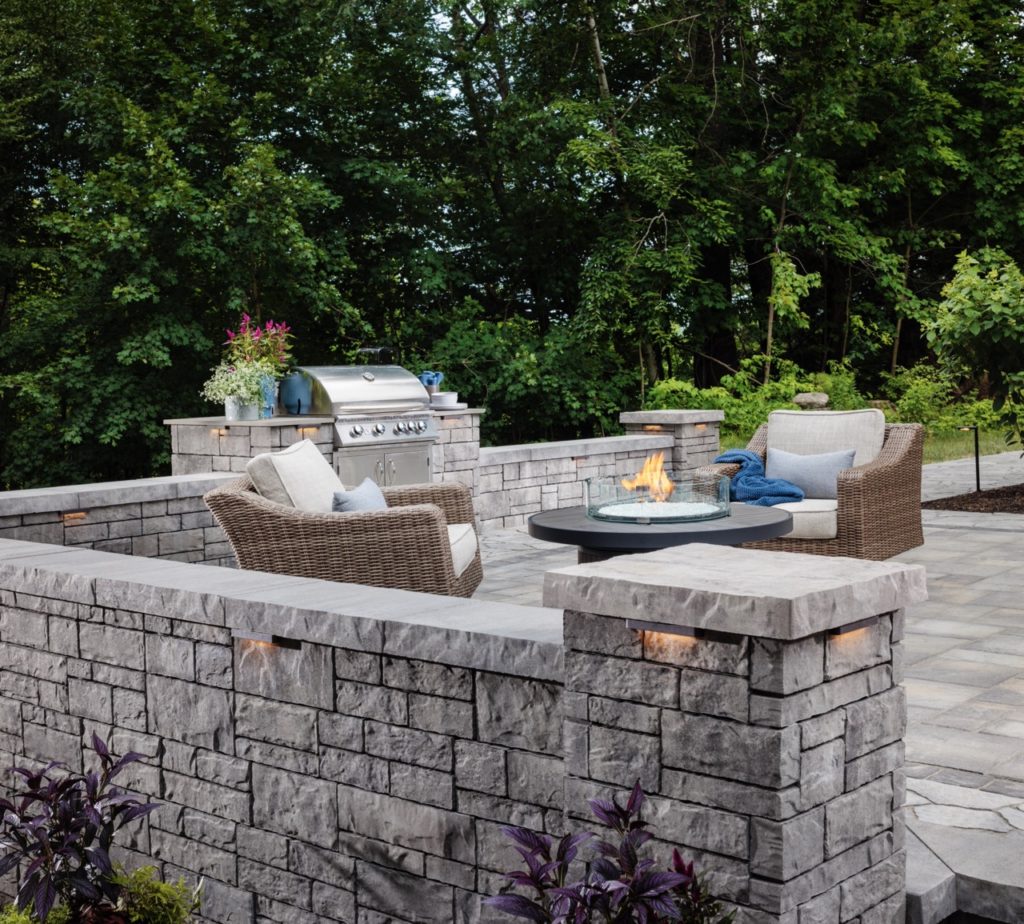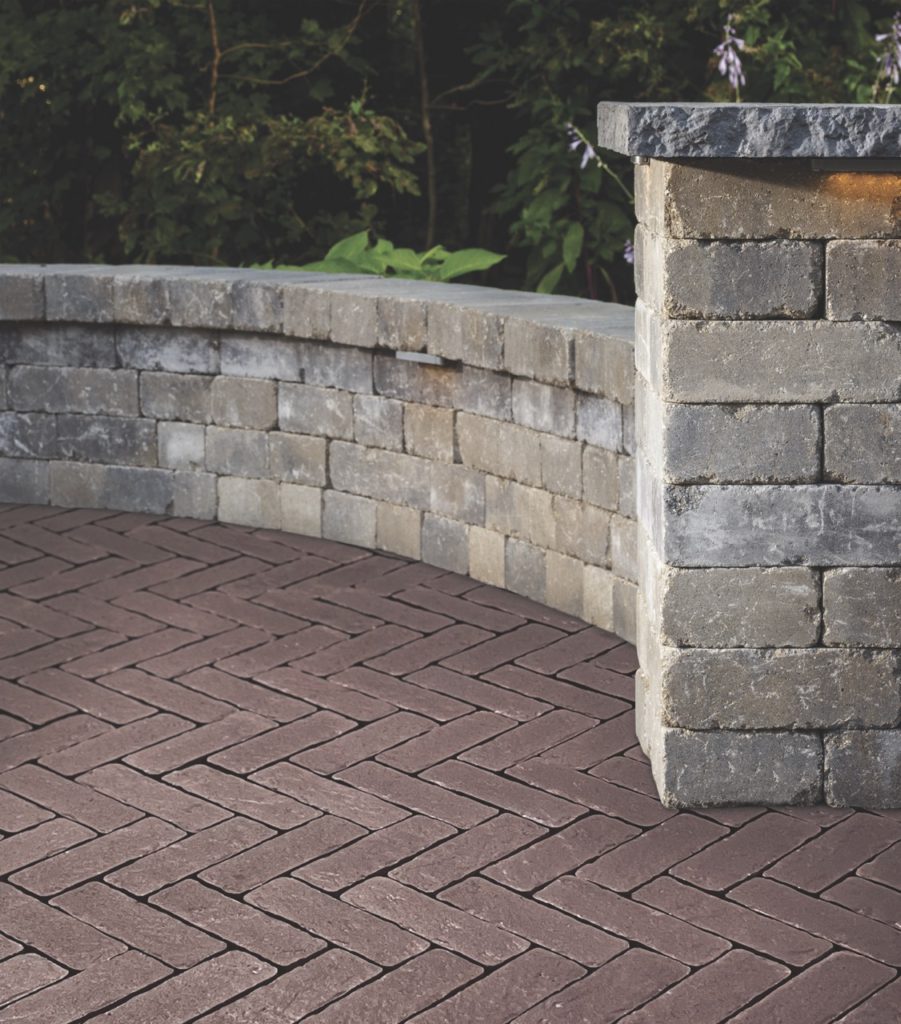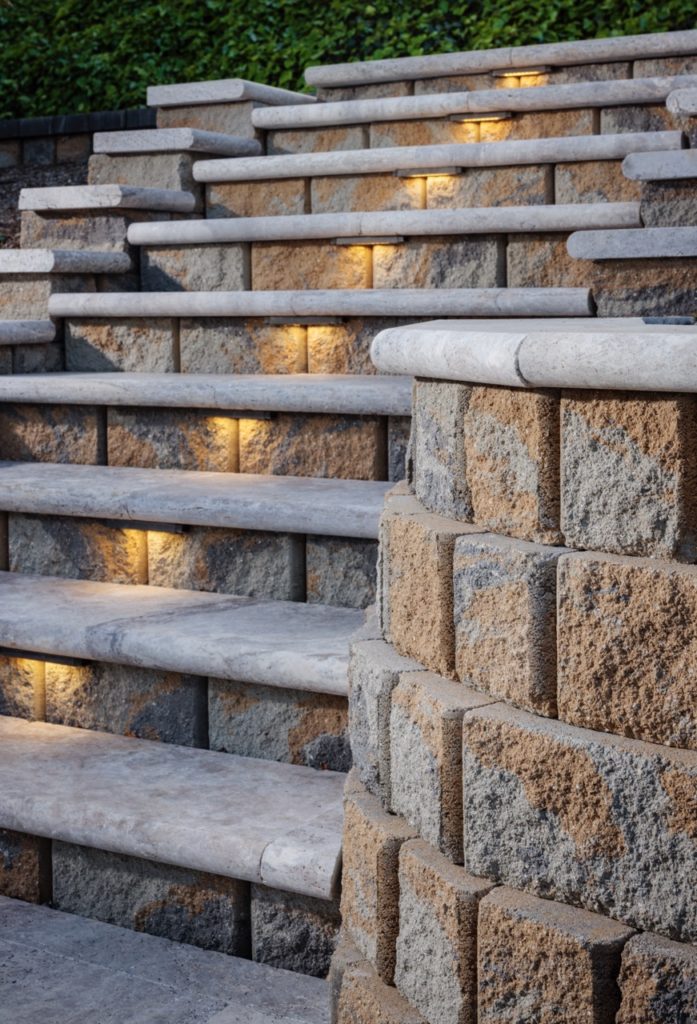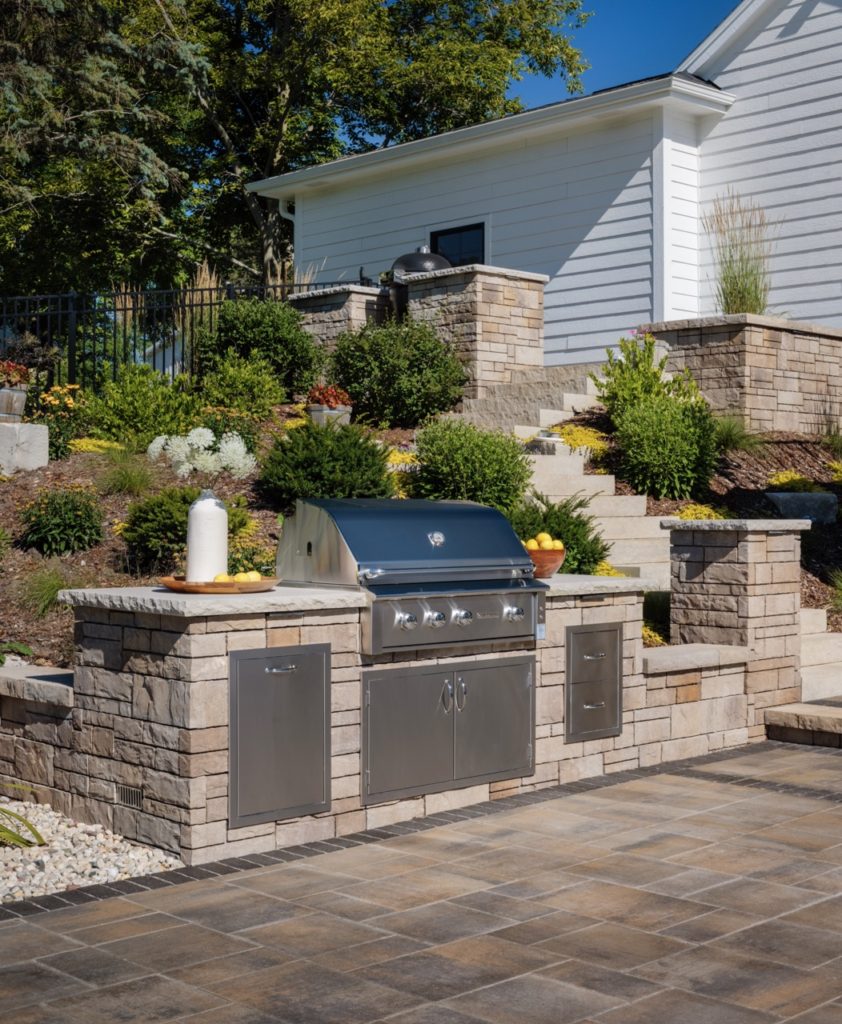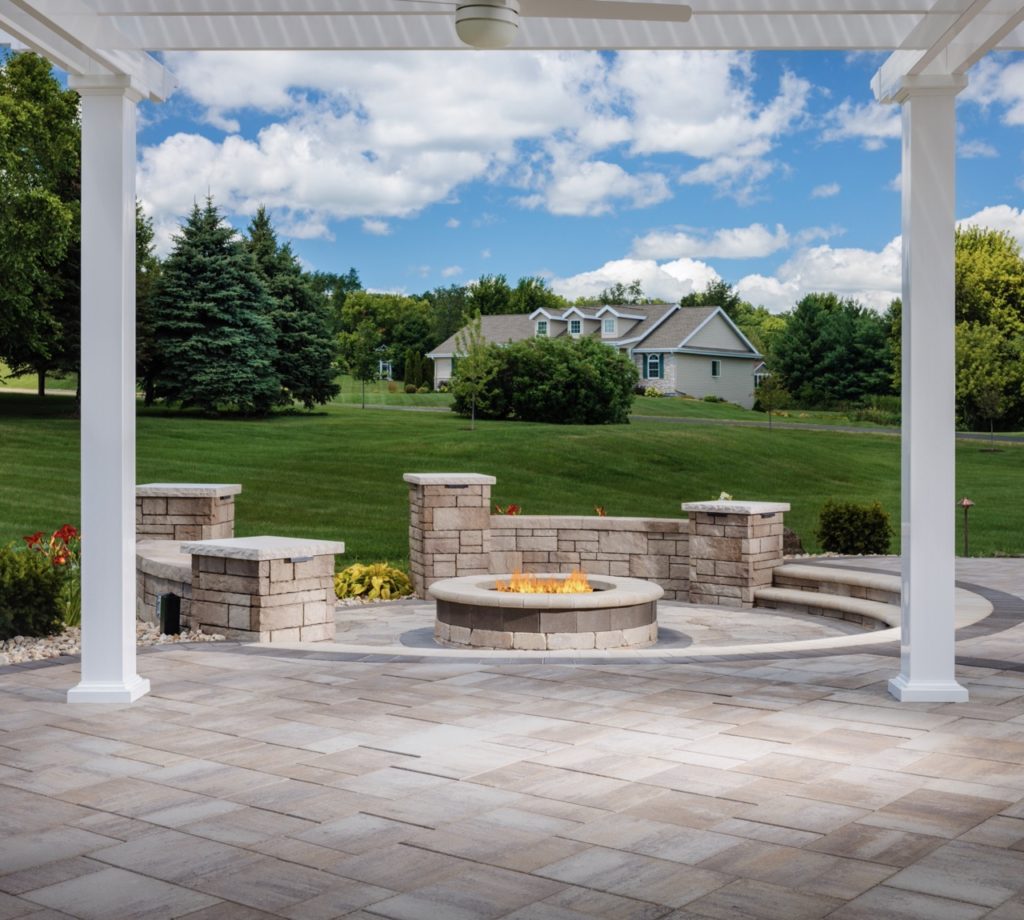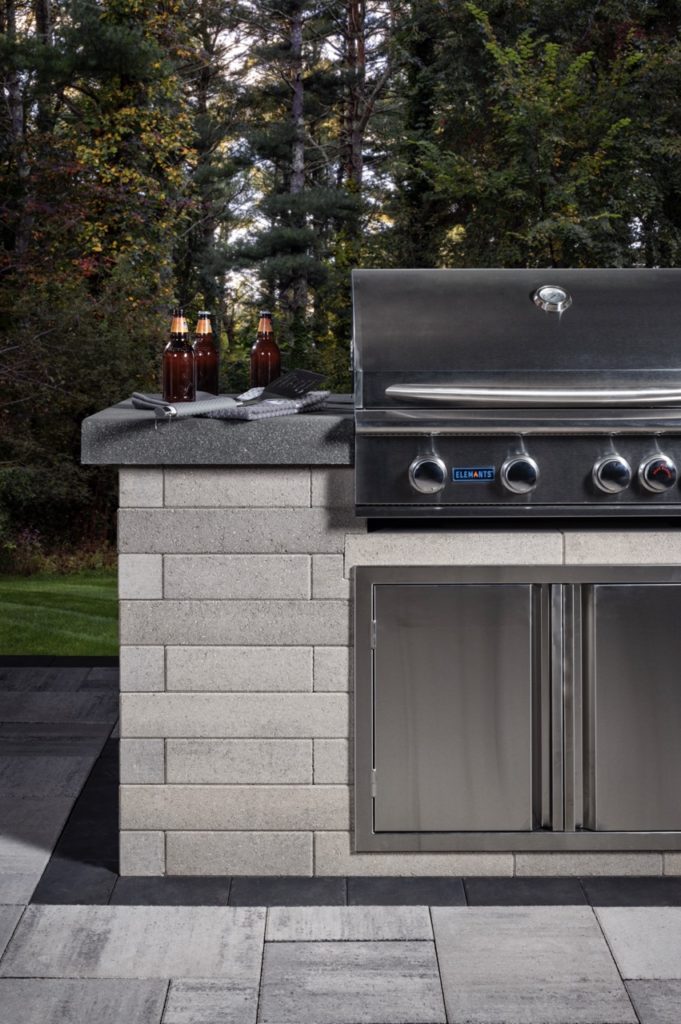Material Use: Emphasizing Color and Texture with Hardscapes
Words: Joe RaboineWords and Photos: Joe Raboine, Director of Residential Hardscapes, Belgard
Embarking on an outdoor living project with a client should be an exercise in creativity. Even if the client’s tastes veer more traditional, there is still room to incorporate visually interesting elements through the material selections. New innovations in hardscape colors and textures allow you to play within whatever parameters your client sets.
Pavers with varying colors and natural textures can help you create stunning outdoor spaces that reflect both your skill and your client’s personality.
Color Pops: Go Neutral or Bold With Pavers
Just like a vibrant paint color or bold accessories can liven up indoor spaces, being thoughtful and intentional with paver palettes makes a statement in outdoor living areas. You can “paint” with different shades and tones to create unique complementary or contrasting designs.
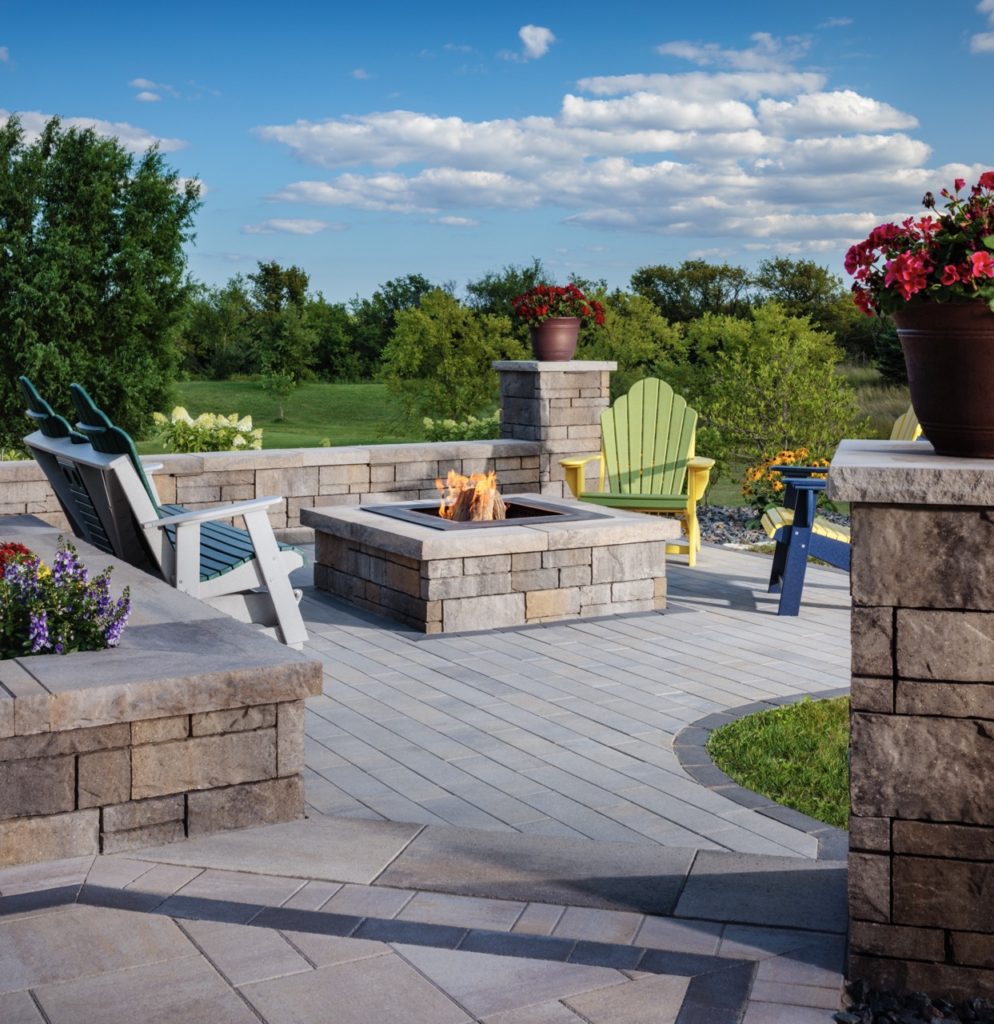
The best advice for selecting the optimal color palette is to select tones that harmonize with the exterior and existing style of your client’s home. Carefully examine what the overall architectural style is – more modern, traditional, farmhouse – to shape the hardscape design and final color selection.
Here are a few tips to consider when thinking through paver colors:
- If the client likes more muted and understated designs, pavers a few shades lighter than the home won’t compete for attention with the exterior or other design elements.
- Gray-toned pavers paired with brick homes can help break up the design and eliminate what may otherwise feel more static and monochromatic (unless that is the client’s desired style). Brick-colored or natural-toned pavers can add warmth to wood or stone exteriors.
- Creating a palette of similar-toned pavers creates a more coordinated, matched effect. Using light colors maximizes space by opening up the area, while darker colors can make areas appear smaller due to light absorption.
- Multi-color blends incorporate more than one color into a paver. These can have a combination of two, three or more colors, which can blend better with the surroundings. It also better camouflages any minor stains or discoloration.
Color is impactful, and a well-thought-out design and color palette brings an extra level of cohesiveness and style to any project.

Adding Dimension: Textured Hardscapes
Textures add a whole new layer to hardscape design. You can find materials that lend themselves to more rugged, natural designs or modern, sleek architecture. With innovative new paver textures on the market today, you have a variety of ways to add visual interest to spaces large and small.
Traditional designs can be enhanced with textile-like pavers featuring subtle yet distinctive textures. These can evoke a very art deco feel that complements traditional exteriors but also can add a level of elegance to modern designs.
Natural textures are a perfect complement to modern aesthetics and lend themselves to the popular biophilic design trend. Pavers that mimic the texture of volcanic rock bring richness and depth to the clean, smooth lines found in modern styles. These textured pavers often come in varying tones of gray, an increasingly popular color among homeowners, so you can mix and match to create a custom pattern. While this texture is incredibly beautiful when integrated into sleeker designs, that’s not to say it isn’t a great contrast in more rustic styles as well.
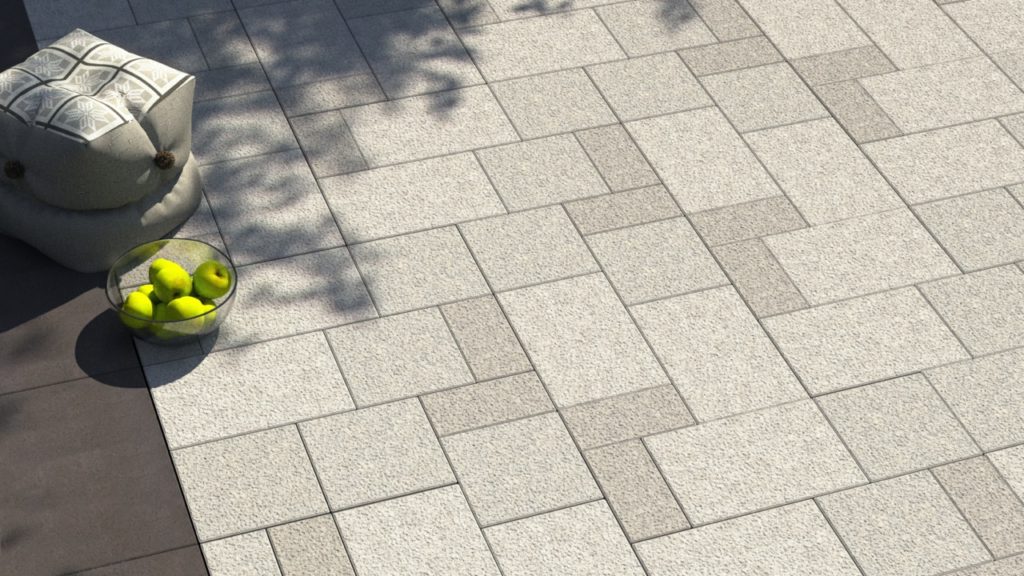
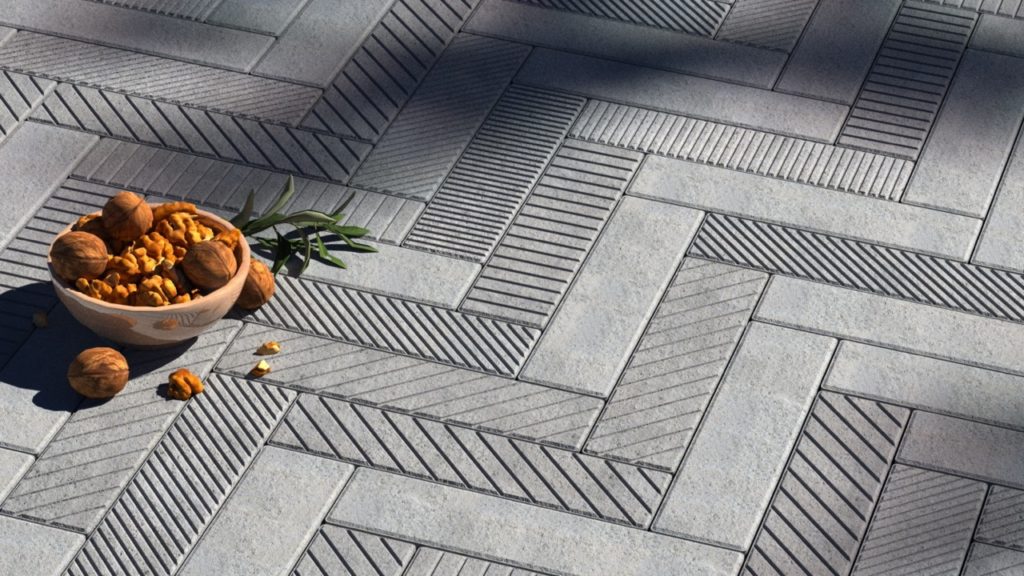
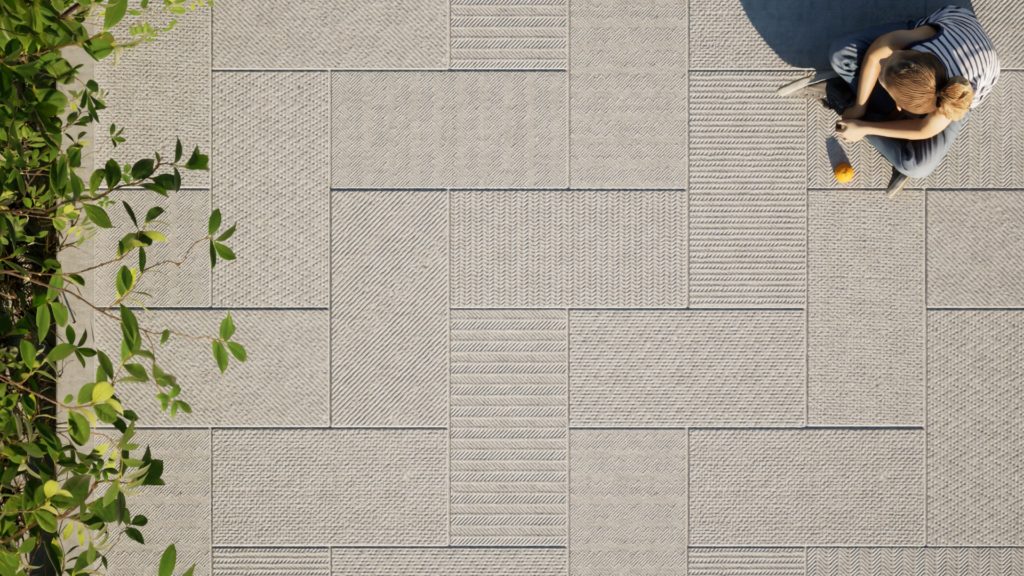

You also are not limited to using just one type or style of product to cover a surface area. Mixing materials like hardscapes with wood, metal, glass and gravel can create either visual contrast or cohesiveness, depending on the overarching style. You can blend decking products with hardscapes and landscaping, and even decorative gravel for an organic feel or sleek pavers and metal railing for boldness.
Building With Modularity
As you work with clients to shape their outdoor living vision, think of how you can maximize time with your product selections. Many of the hardscape products mentioned, like varying color palettes and textured pavers, are available in modular formats that make installation easier. Working off nominal sizes, modular pavers offer more flexibility to easily create patterns, such as classic herringbone or intricate geometric shapes.
These products often can be mixed and matched, so you aren’t limited to just one specific product range, texture or color. This all creates a more streamlined design process, allowing you to maximize efficiencies and deliver for your clients ahead of schedule.
